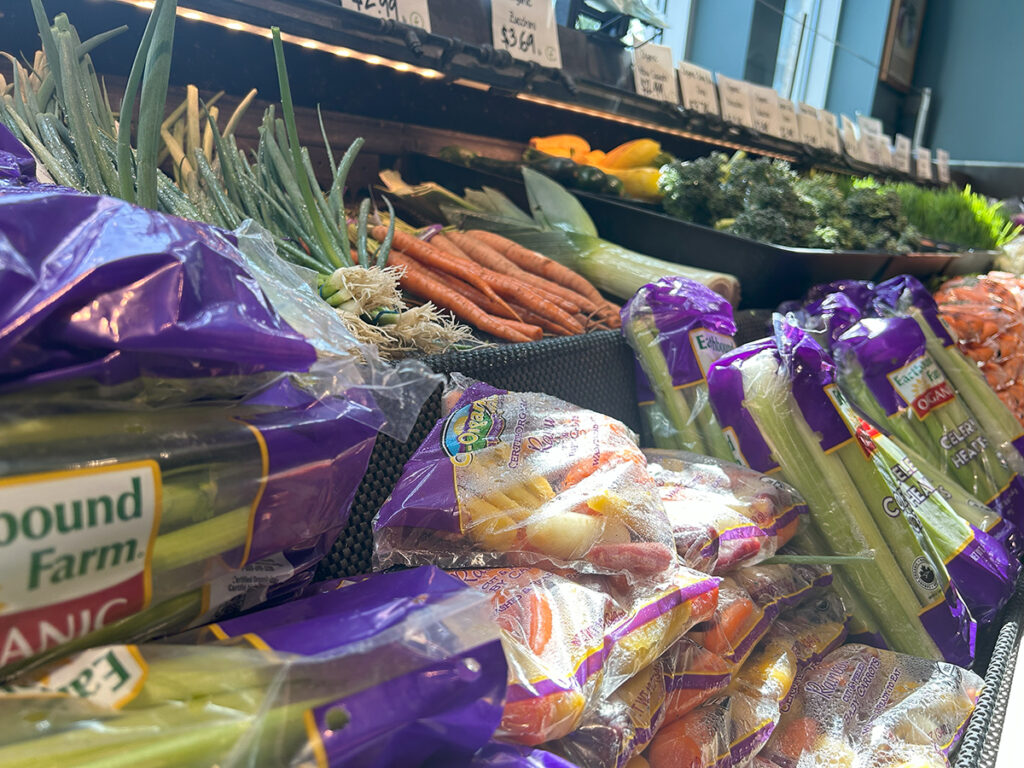By Ammi Midstokke
At 94, my grandmother tells me she’s on the “Whatever I Like” diet. As far as I can tell, it’s comprised of a buttered danish for breakfast, a boiled egg for lunch, and whatever I cooked for dinner that night (extra points if steak is involved). And always: A salad. While I clank around in the kitchen, she sips white wine with her best friend, Neva, three ice cubes per glass. I’m not sure how—what with all those ice cubes—but the bottle is empty by the time Neva drives her Crosstrek the half block home.
She did not always eat like that. For years, she survived mostly on bran muffins and Egg Beaters because her partner had a heart attack in 1984 and cholesterol was the devil. Sometimes she needed to lose weight (less treats) and sometimes she needed to gain weight (eat more often). Sometimes she tried to eat up to eleven different fruits and vegetables in a day, which is an exotic task for anyone having grown up during the Depression. She reduced red meat here, increased fiber there as her changing body had changing needs.
In a world of colliding nutrition information and competing food dogma, it is refreshing to know someone who doesn’t have a litany of inedible edibles on their growing list of taboo foods. As a nutritionist, I spent over a decade trying to teach patients that diets are therapeutic and short term. Beyond that, we’re embracing a culture of disordered eating that drowns out the clear voices of our body (and often our doctors).

Incidentally, our doctors and bodies often say the same thing: Eat more fruits and vegetables. And while that might be rather a constant for the human body, most of our other nutritional requirements are as dynamic and volatile as our hectic lifestyles, as changing as the seasons, as fickle as a politician. Yet we often find ourselves in conversations where we are convinced (or convincing) that a particular diet or macronutrient balance is the panacea to our problems.
When we do more cardio, we need more carbohydrates. When we age (especially women), we need more protein. When we’re injured, we need more essential fatty acids. When we’re reproducing, we need more of everything. And yes, when we’re broken hearted, sometimes we need more ice cream.
As we wrap up summer and autumn comes upon us, what might we need? Well, for many of us, we probably need fewer cocktails. We’re getting less sun and may benefit from Vitamin D-rich foods (like eggs, salmon, mushrooms, almond milk, dairy). Our petri dish kids will be bringing the latest colds home from school and we could use strong immune systems and antioxidants (like citrus, berries, carrots, beets, sweet potatoes, nuts and seeds). Our joints, battered and bludgeoned from the plethora of summer adventures, could use some help recovering (salmon for the good fats, bone broth for the protein and collagen, chia seeds for their nutrient density and minerals, beans and lentils for their protein and fiber).
Before we dive into the next thirty-day challenge or post-summer health kick, maybe we can pause and listen to what our bodies are asking for. It can be hard to hear over the noise of media and culture, but chances are if you hang out in the produce aisle long enough, it will give you some hints. And if you listen carefully, you might find that the “Whatever I Like” diet works because your body actually likes whole foods, bright colors, and variety.
Ammi Midstokke is a Functional Nutritional Therapist and lover of food. Her favorite part of autumn meals is the return of soups and stews and how the smell of cooking permeates the house on a cold day.













